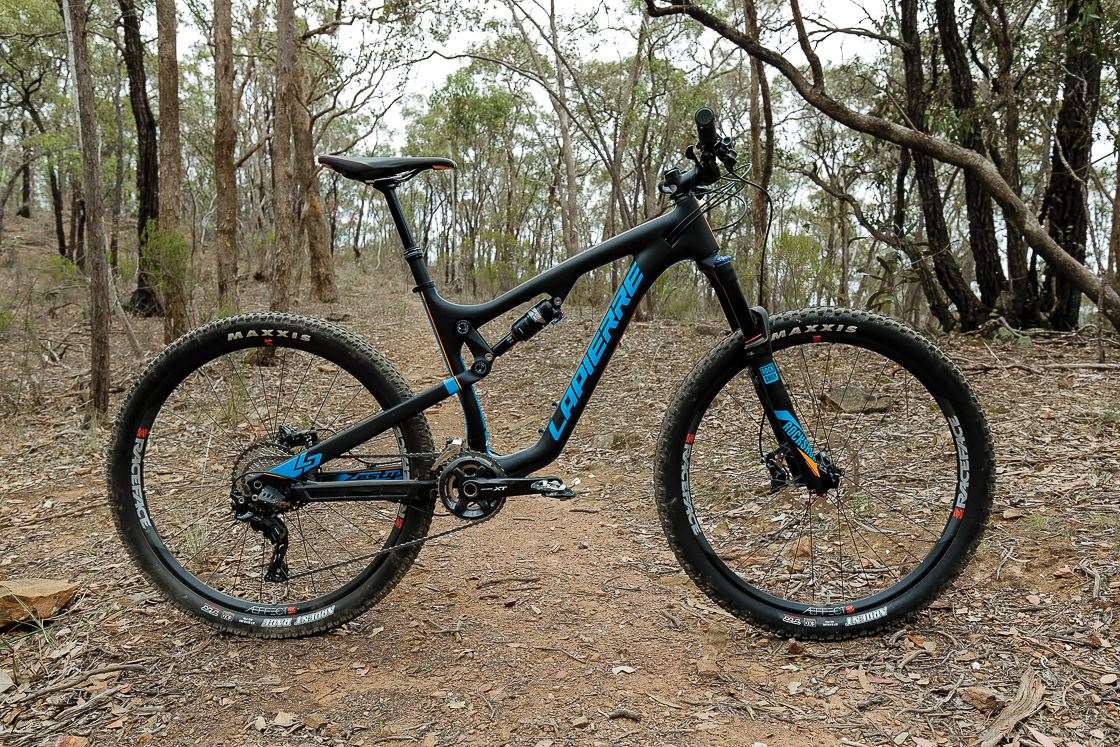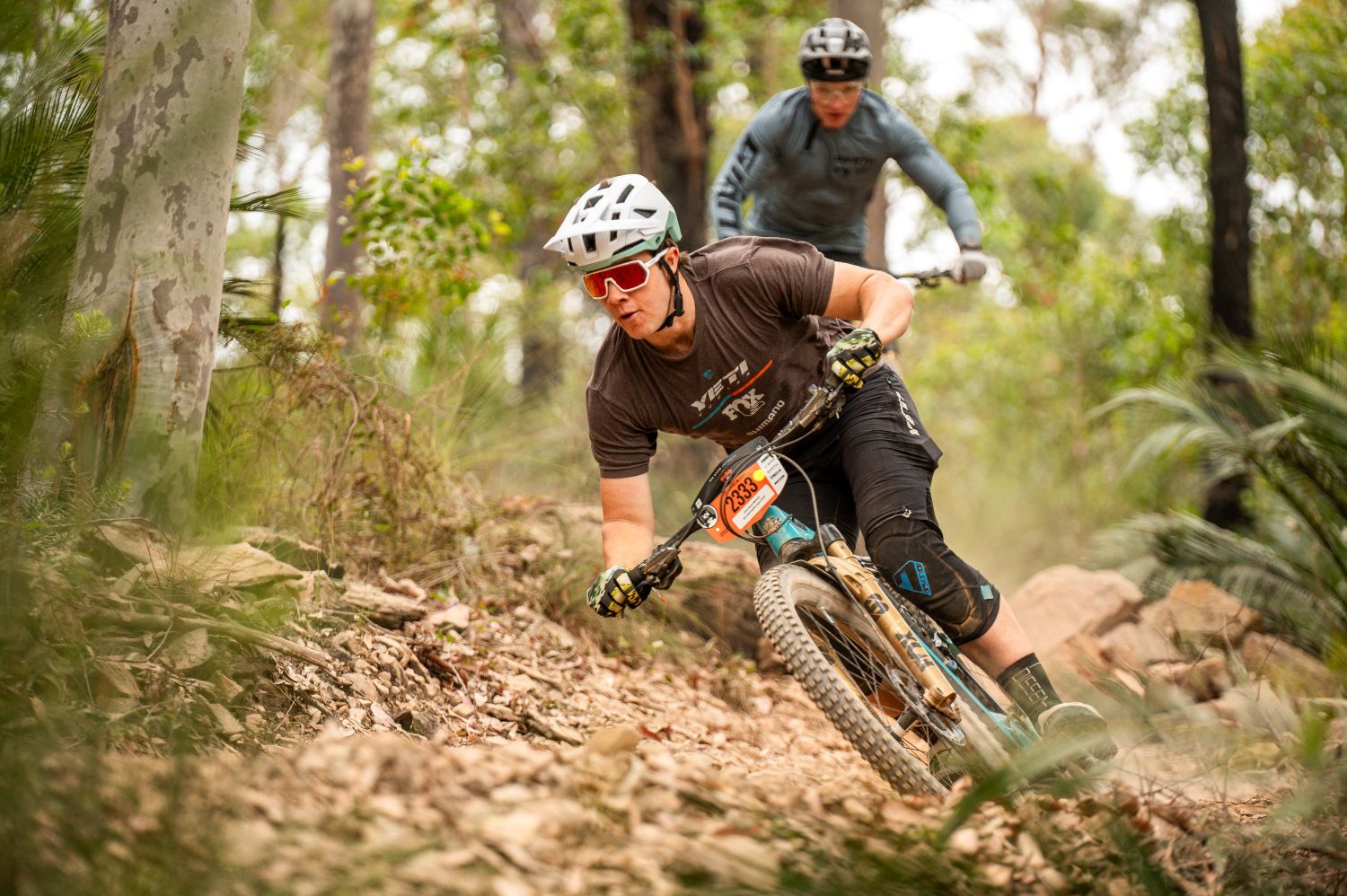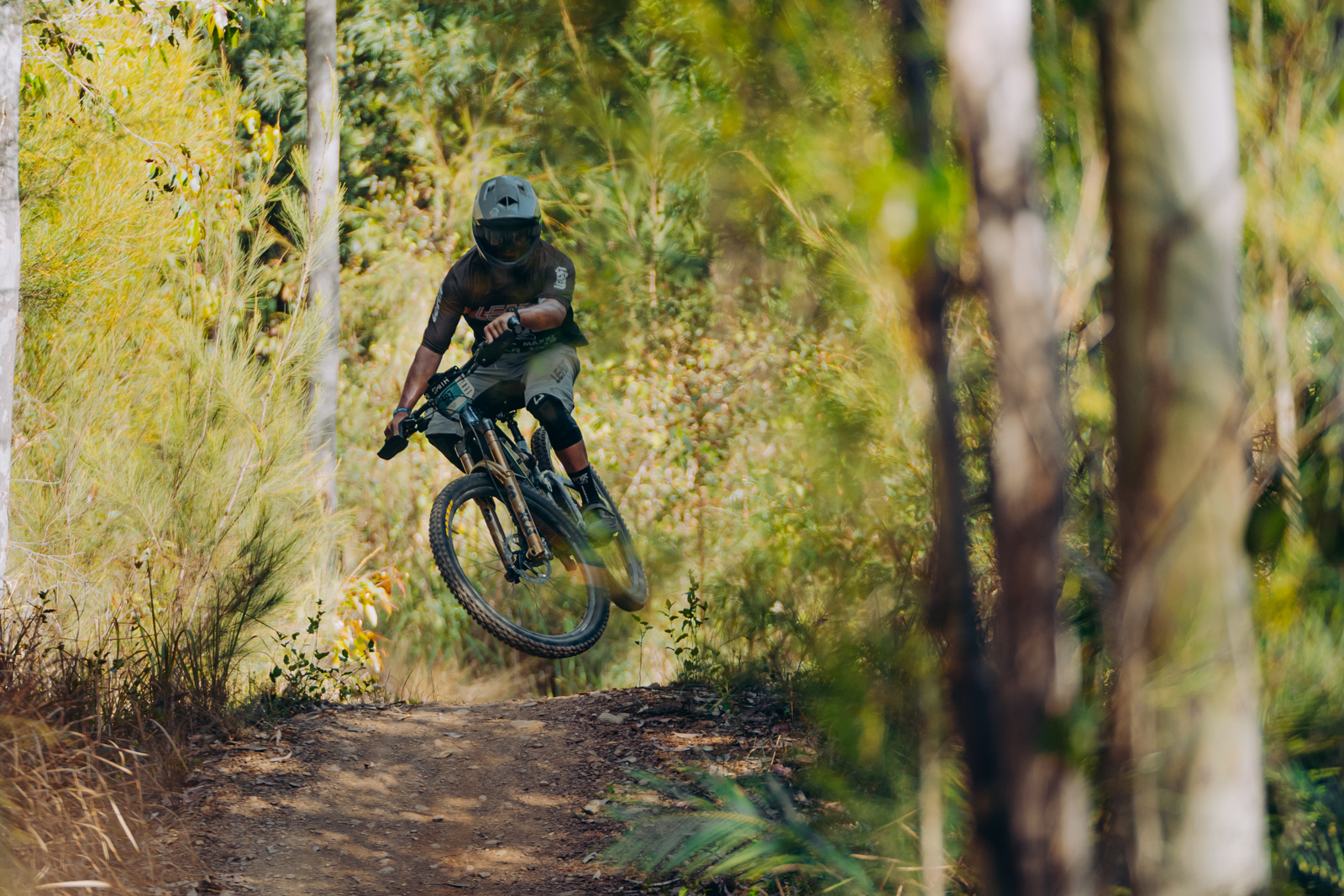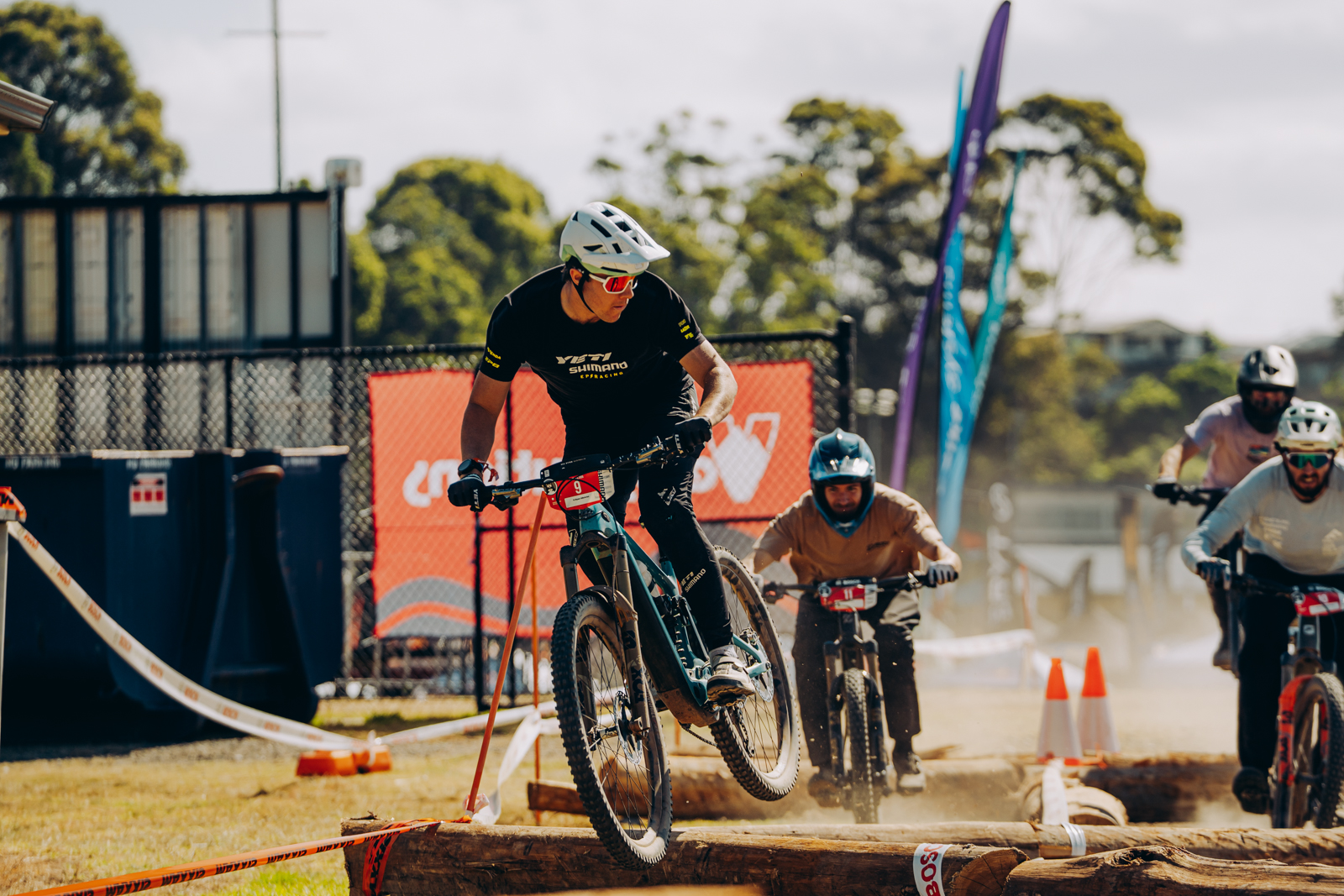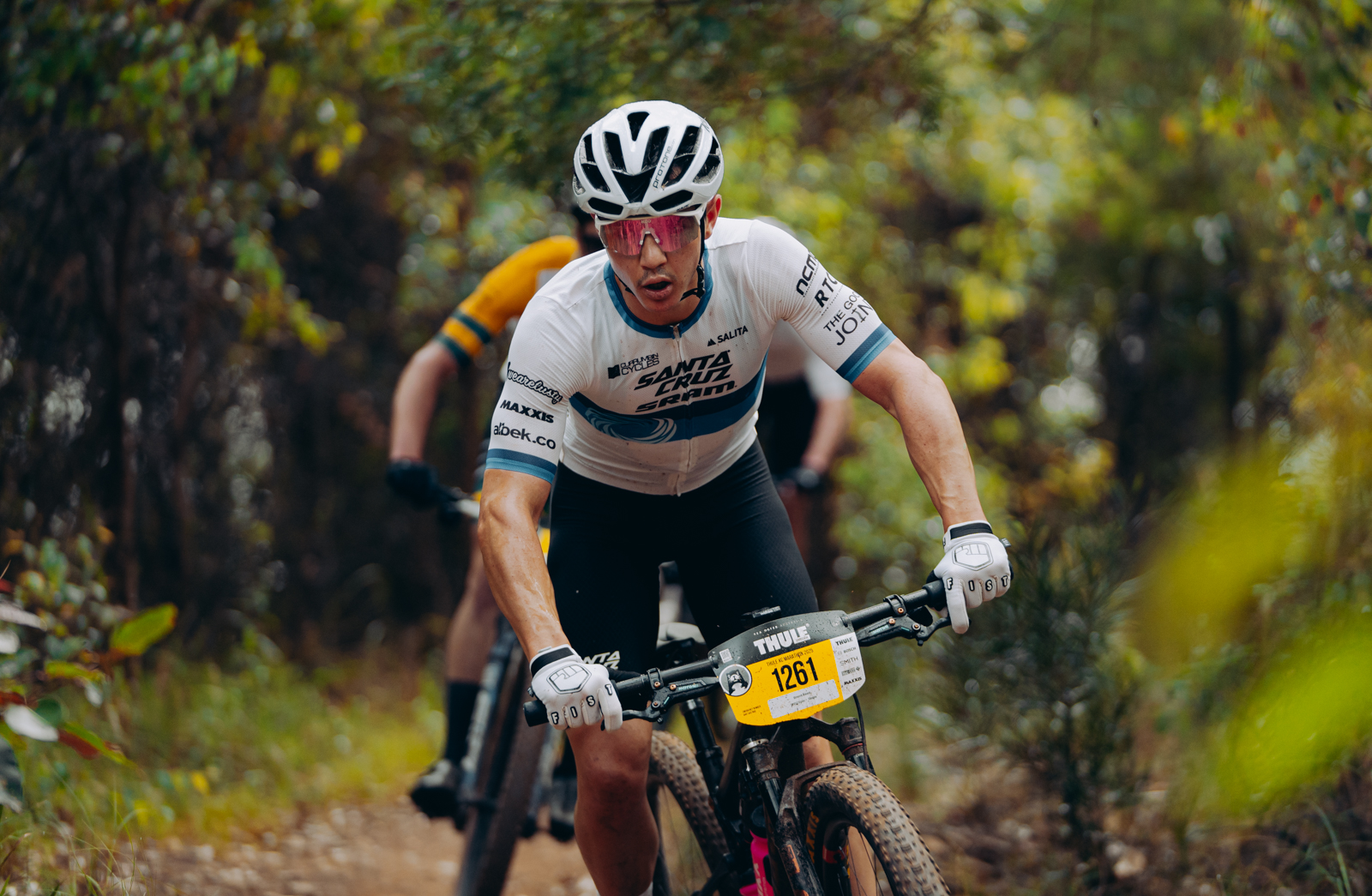TESTED: Lapierre Zesty XM 527
Photographer: Timothy Arch
Photographer: Timothy Arch
Celebrating 70 years in 2016, the Dijon-based company is one of the largest bike brands in Europe, and it’s quickly becoming a well-recognised name at our local trailheads.
Backed by substantial manufacturing and R&D resources, Lapierre has earned itself a reputation for producing numerous innovations and award winning bikes over the years. Unique technologies such as their e:i electronic suspension platform have helped generate significant media buzz, while big name athletes such as Nico Vouillouz and Loic Bruni have been successfully flying the Lapierre (and French) flags in their respective racing disciplines.
We have previously tested the 150mm-travel Zesty AM and the 29”-wheeled Zesty TR. The combination of gorgeous looks, alpine-capable geometry and the active OST+ suspension design on the Zestys has led to many “oh-la-la’s” on the trail, both from test pilots and onlookers.
For 2016 however, Lapierre have undertaken a not-insignificant overhaul of the Zesty range, with an updated suspension design, lighter frames and reworked geometry applied across the line. Gone is the Zesty TR 29er, and Lapierre decided to redesign their 120mm trail bike with 27.5” wheels, and in the process, gave it a new name; the Zesty XM.
Starting from $3999, there will be 3 Zesty XM models available in Australia: the 827, 527 and 327. The two top models are equipped with a full carbon frame, while the Zesty XM 327 gets a cheaper alloy frame. Both the 827 and 527 models are also available in e:i versions too.
Over the past couple of months, I’ve been getting very familiar with the mid-spec Zesty XM 527. Given how high the Zesty TR set the performance bar, I was keen to find out whether Lapierre had made a mistake shelving the 29er in favour of smaller wheels. Would the new XM live up the same lofty expectations?
Initial Impressions
Whereas the 150mm travel Zesty AM is targeted towards hardcore riders frequenting steeper terrain, the 120mm travel Zesty XM is designed to be a lighter, more playful, and more versatile all-round trail bike.
Interestingly, both bikes largely share the same frame, but the Zesty XM runs a shorter stroke shock and a different upper shock mount. As a result, the beefy frame and oversized pivot junctions make the XM look more like a shrunken enduro bike, rather than a long-legged XC bike.
Lapierre know how to make a very good-looking bike, but the shapely carbon profile has been used primarily for function. The seat tube and main pivot have been offset to deliver crucial real estate for the direct-mount front derailleur, and the curvy sub-frame offers up butt-loads of tyre clearance for up to 2.4” wide rubber. The internal cable routing is sleek, with the bolt-on carbon armour plate at the base of the downtube doubling as a large access port for the cables. Other quintessential Lapierre touches include the carbon rear derailleur guard and a discreet removable sag indicator on the seat tube.
Despite the beefy appearance, a Medium Zesty XM frame weighs just 2.28kg with the rear shock. Titanium shock pins and large diameter alloy pivot hardware certainly helps, as does the full carbon frame and shock linkage. Lapierre have been perfecting their carbon frames both on the road and off it for many years now, with the Zesty XM frame receiving their latest carbon fibre construction. There’s a 92mm wide press-fit bottom bracket shell to help strengthen the downtube and seat tube junction, while the massive headtube junction features a similar design with press-fit alloy cups.
Part of the Zesty XM’s lightweight is also due to the new OST+ suspension design. Lapierre have removed the shock yoke from the previous design, which helps to shed grams while also creating a more progressive feel to the suspension curve. The goal was to give the new bike snappier pedaling and improved bottom-out resistance, while also allowing a water bottle to fit inside the front triangle thanks to the top tube-mounted shock.
Suspension on the Zesty XM 527 is provided by RockShox, with a Monarch RT shock out back that uses the larger Debonair can. Up front is the highly underrated Revelation fork with 130mm of travel. Coming in at 1.8kg on our scales with a Solo Air spring and skinny 32mm stanchions, it’s the Pike’s baby brother.
The Zesty XM 527 is dressed up with the brand new Shimano M8000 Deore XT groupset. While some of the ‘core’ riders out there will scoff at the 2×11 setup, it’s good to see Lapierre providing riders with gearing options, as it’s an easy and inexpensive process to set the bike up as 1x if you so choose.
Wheels come in the form of a new OEM wheelset from RaceFace called the Aeffect. These are built with trick-looking CNC machined sealed bearing hubs, straight-pull spokes and brass nipples. The eyeleted rims feature a 23mm internal rim width, and I found them easy to setup tubeless with two layers of Stans Yellow rim tape. Unfortunately tape and valves aren’t included with the bike, but the Maxxis tyres are Tubeless Ready models with the reinforced EXO casing. At 1720 grams, the Aeffect wheels surprised me by coming in well under their claimed weight.
For our Medium test bike setup tubeless, the Zesty XM 527 came in at 12.52kg.
On the trail with the Lapierre Zesty
As I’ve come to expect from Lapierre mountain bikes, the Zesty XM felt comfortable straight off the bat. The 740mm Nico Vouilloz handlebar has the perfect amount of rise and sweep, and for most riders it’s the ideal width for aggressive trail riding. The thin lock-on grips have great tactility, and the SDG saddle proved to be a highly inoffensive perch for all those who tried it.
Compared to last years Zesty TR, the overall reach of the Zesty XM remains much the same, but this time it’s achieved by combining a longer 610mm top tube and a shorter 60mm stem. The stubby stem is necessary to speed up steering with the slacker 67-degree head angle, It does mean the XM experiences a certain amount of ‘wheel flop’ if you’re dawdling up pinch climbs, but you quickly learn to compensate by dropping your elbows and leaning over the bars to help weight the front tyre.
Overall, the Zesty XM is a textbook example of modern trail bike geometry. Much like a downhill bike, it’s long, low and slack, and it begs to be ridden hard. In the sag position, the bottom bracket axle sits just 30cm off the ground, which drops your center of gravity down between the hub axles. The Zesty XM also features a relatively steep seat tube angle, placing the rider between both wheels. The combination of these two attributes means the Zesty XM handles corners like a mid-engine racecar, with you feeling in complete control of all available grip.
Also contributing to this cornering composure is the stiff and lightweight frame, which is highly adept at making last-minute line changes. It also remains stable underneath you when you’re pushign the bike deep into banked turns – a scenario where less-capable trail bikes can often begin to wiggle and feel vague. When you do reach the limits of traction, feedback from both tyres is translated well to the riders contact points, and the short back end means the rear tyre is easy to push into oversteer. The Ardent/Ardent Race treads proved to be a decent enough combo for hardpack XC riding, but with the Zesty XM egging me on, it didn’t take long for me to try a 2.3” High Roller II up front to see just how far I could push the bike on more technical terrain.
The new suspension design certainly delivers on its promise of improved pedaling efficiency, and it contributes a lot to the Zesty XM’s ‘pop’ and playfulness on the trail. That said, it has definitely lost some of the plushness of the previous OST+ design. This is because rotational duties have been handed back to the shock’s lower DU bushing, instead of the two sealed bearings used inside the shock yoke of old. Despite the fact that the Monarch features the Debonair can with its larger negative spring and smoother starting stroke, I still couldn’t get the back end to feel as plush as the previous Zesty TR, which had one of the smoothest suspension designs going. One potential remedy would be to fit a needle roller bearing in the lower shock eyelet, and further tuning options would be to try some Bottomless Rings inside the air can (the rear shock comes stock with none).
To achieve the required 35% sag, I ended up settling on 190psi in the rear shock for my 70kg riding weight. I did find that the OST+ design is relatively sensitive to setup, as its virtual pivot point achieves equilibrium at the sag point, meaning anything outside of that starts to make the shock feel over/underworked. Once you get it right though, the rear suspension offers a very deep and bottomless feel, with an active mid-stroke that is not unlike a VPP bike. Larger high-speed hits are swallowed up admirably, to the point where I was seriously questioning whether this was only a 120mm travel bike.
Without the funky e:i system controlling rear shock compression, the stock Monarch RT does feel boggy when you stand and hammer at the pedals, so you’re better off remaining seated for pedalling. I typically left the shock wide open to do its job, but for long fireroad sections, the blue compression lever does come in handy to engage a firmer pedal platform.
Up front, I ran 88psi in the Revelation fork to put it at around 27% sag. In a further attempt to match the deep suspension feel out back, I also removed one of the two stock Bottomless Tokens to help open up the spring rate. It became apparent that I was fighting a losing battle though, as while the Revelation is a smooth fork that handles most impacts pretty well, it is no match for the bigger Pike fork – a fork that the Zesty XM is begging for. Now that modern carbon frames and wheel sets are becoming so much stiffer, any fork with 32mm stanchions on a trail bike just feels under-gunned, and that’s especially noticeable on a bike that’s as playful as the Zesty XM. Yes this is a sub-13kg carbon trail bike with 120mm travel, but the extra plushness and steering control from a PIKE would be well worth any weight penalty. On that note, I should also mention that the Zesty XM frame is rated for up to 140mm of fork travel should you want to slacken the bike out further.
I did run into a couple of niggles during my time with the Zesty XM 527, with the Shimano press-fit BB developing a nasty creak about half way through. Typically removing, cleaning and reinstalling the Nylon cups can remedy this, but it’s frustrating to experience on such a new bike in 2016. I also had some of the pivot bolts work loose after the first few rides, with the two shock pins being devoid of any Loctite. A good reminder that any new bike needs a thorough check-over when it comes out of the box.
The new XT controls are an absolute delight to use thanks to the textured dimples on both the brake levers and shift paddles, and the indexing on the shifters is the most positive from Shimano yet. However, the shifting was never as smooth as I would expect from XT. I did find that the gear cables were crossed inside the downtube from new, but even after re-routing them, shifting remained heavy. Otherwise the range from the 2×11 system is fantastic, and on many occasions while riding long climbs alongside riders on 1x drivetrains, I took much delight in dropping the chain into the granny gear to save energy and spin my way uphill.
The KS LEV Integra dropper post offers up 125mm of smooth, infinitely adjustable travel, and the minimalist remote works well. Bizarrely, the saddle would often refuse to return on its own if it was fully compressed for more than a couple of minutes. This annoying trait seemed to be independent of cable tension and seat clamp torque, with a quick tug of the saddle required to free the post up.
Our Take
You may have already picked up that the Zesty XM 527 arrived in my possession to a certain amount of skepticism. I was definitely a big fan of the Zesty TR, and I hate seeing good bikes being quashed by commercial pressures. Thankfully however, the Zesty XM proved me wrong. It isn’t as fast as its 29” predecessor, it doesn’t climb the chunder as well, and it just doesn’t have the same raw bump-eating capabilities that the previous OST+ suspension design enjoyed. But the Zesty XM is without doubt a livelier and more playful trail bike that puts a spotlight on the very best attributes of the smaller 27.5” wheels.
In essence, the Zesty XM successfully combines capable big-bike geometry in a lighter and snappier carbon frame that makes it an absolute hoot to throw around on the trail. In my opinion, more riders could benefit from riding a bike like the Zesty XM rather than a big 6” travel all mountain rig. And realistically, with its 180mm rotors, dropper post and wide bars, the Zesty XM gives up very little in the capability stakes.
Lapierre Zesty XM 527
RRP $5999
Contact advancetraders.com.au
Available Sizes: Small, Medium (tested), Large, X-Large
Tester: Wil Barrett
Riding Experience: With 15 years of riding experience, Wil has spent the majority of his life on two wheels. He’s been testing and reviewing bikes for the past 3 years, and is obsessed with the technical details that go into producing a bikes geometry, handling and suspension characteristics. Wil occasionally puts on a number plate for the odd XC and marathon race, but he loves nothing more than riding technical singletrack and exploring backcountry trails.
Generally Rides: Cotic Solaris, Trek Fuel EX 29, Pivot LES 27.5
Height: 175cm
Weight: 67kg
Bike Test Tracks: Bendigo, Castlemaine, Lakes Entrance, Mt Taylor
Three things you liked about the bike:
1. Confident big bike geometry in a tighter, lighter and faster package
2. Supple and bottomless-feeling rear travel
3. Excellent contact points
Three things you would change about the bike:
1. A bike this capable warrants a Pike
2. Add tubeless rim tape and valves straight off the bat
3. Internal cable routing is messy and noisy

